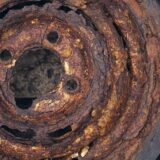
Wishing every day of the new year to be filled with success, happiness, and prosperity for you. Happy New Year.
As 2022 drastically ended with much of supply chain distruptions and shifts of supply chains, 2023 is unpredictable for supply chains in metal industry. In this article, we will introduce some of the trends from Japanese Steel Industry with our own interpretation as independent metal supply chain company.
In 2022, much of the world suffered from inflation, particularly the price rise of energy. The central banks in most of the countries increased interest rates to tame inflation. As a result, the borrowing cost of money increased and general economies are expected to slow down in 2023. This background leads downward pressure on price and extra capacity for the first half of 2023. Especially the demand in China has become weaken and Chinese steel industry has extra capacity. If the inflation in the US and Europe settle down in the latter half of 2023, the demand of metals may pick up. Despite the world downward pressure of steel prices, Japanese steel prices have been relatively stable for some steel grades due to the more or less integrated steel mills and end users preferences to Japanese steels. About the supply, steel mills manage the supply to stockists in Japan so that stockists cannot expand their businesses quickly while they avoid the risk of overstock. In 2023, if the semiconductor supply becomes stable and Automobile production recovers, Japanese steel demand will increase and thus the price in Japanese market at least may be stable or even increase.
As we wittnessed more evident climate change and abnormal weathers in 2022, the Carbon Neautral continues to be an important topic for metal industry as the metal industry emits large amount of carbon. The Japanese steel industry agrees to become carbon neautral by 2050. The steel industry, particularly the largest blast furnace mills (Nippon Steel, JFE, Kobelco) are working on utilizing Hydrogen for steel manufacturing. Blast furnace mills melt the minerals such as Coal and Iron Ore and emit more carbon, while electric furnaces recycle scrap steel and emit less carbon. This carbon neutral trend requires heavy investment for new technologies and some “carbon tax” maybe imposed for steel prices in the coming future. These trends may push up the price of Japanese steels. As Enserve, we will work on ways to contribute carbon emission reduction by what we can do. For example our copper alloy applications may drastically enhance production speed and thus reduce carbon emission.
The digital transformation (DX) of the steel industry has been implemented among large corporations in areas accounting, production control, Sales, Human Resources, and Research. At large mills drones may be used for maintenance and safety reasons (reference). As a Small Medium Enterprise (SME), Enserve adopts the DX slowly such as the followings. There are much free and easy to use tools such as Canva for catalogue making and Midjourney for AI drawing illustration. As industry habit, face to face meeting is important so we will balance for DX and conventional methods.
- Cloud Data Storage
- Web Marketing
- Cloud Accounting
- Free Catalogue Software
- Free AI drawing / Illustration Software
- Cloud Outsourcing / Co-working
Enserve continues to be tailor made metal material supply chain company for 2023. If you have a problem in terms of Quality, Cost, Delivery, or others such as slow / inflexible response of your current supplier, we will be happy to help you.


